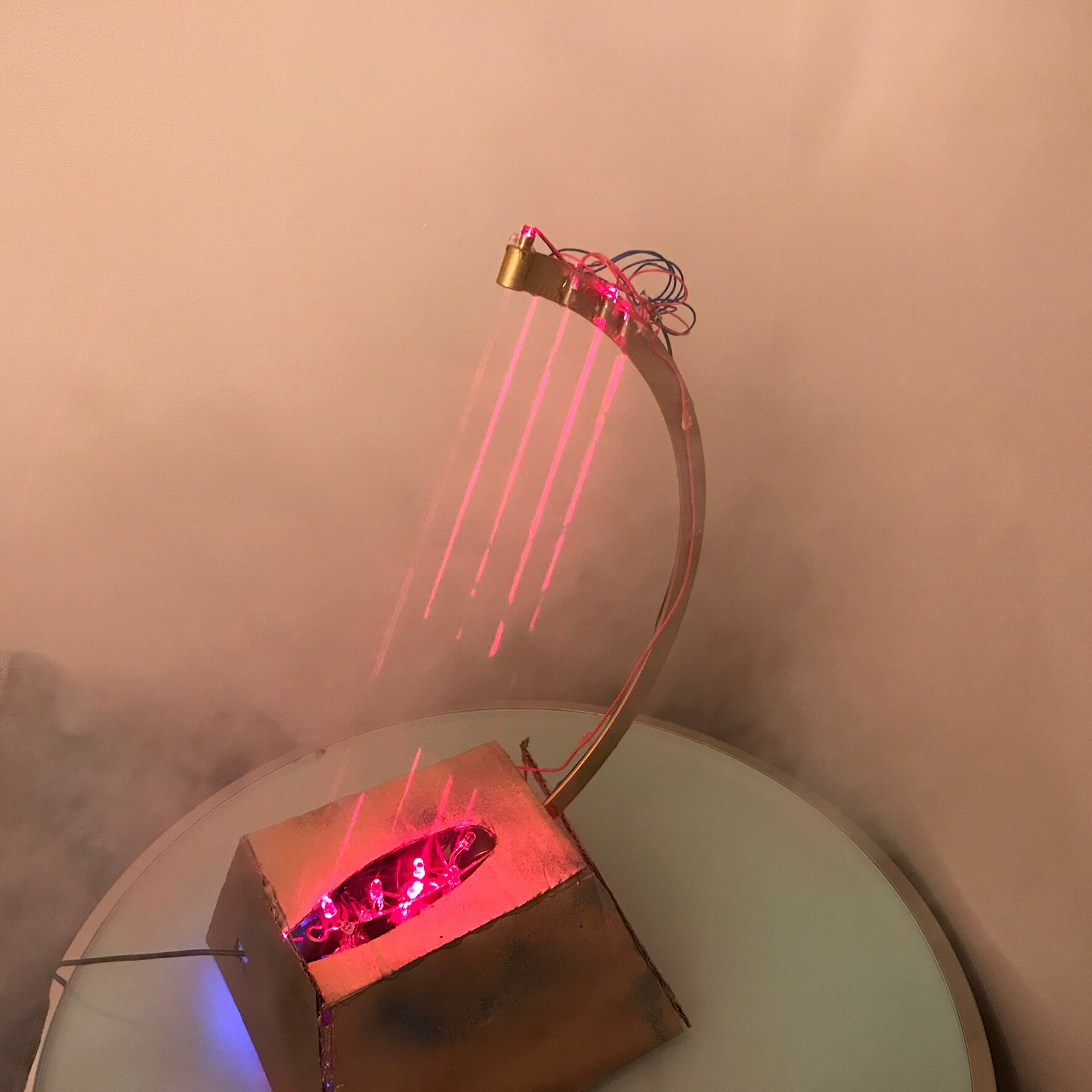In a room filled with guitars and bookshelves, Reuben Levine plays a few notes on a strange device. Clones of him pop up on the side of the screen, playing more familiar instruments: a guitar and drums. Together, they create a classic melody, instantly recognizable as “I’m a Believer” by the Monkees.
At the center of this eclectic performance, seen in the video below, is an instrument that Levine himself designed and built: a harp made of lasers.
Levine’s laser harp, a product of three years of iteration, is a function of his combined knowledge of music, 3-D printing and engineering. Levine, a rising senior studying mechanical engineering at the USC Viterbi School of Engineering, has long harbored a passion for both music and craftsmanship, and this project was the ideal situation for him to explore both interests.
“I actually made three iterations of the laser harp, over a span of three years,” explains Levine. “That means that I built it to functionality three times, and between each design, I started over completely from scratch.”
The first iteration, made from the scraps of a globe, had the basic functionalities of a harp, including five “strings.” But Levine was not satisfied with this version, as it was ultimately not much more than a proof of concept. He knew he could do better.

The first iteration of Levine’s laser harp, built from an old globe. Photo credit: Reuben Levine.
For the second iteration, Levine enlisted his friend, Luke Kratsios, an architecture student at Cornell University. Kratsios’ understanding of the physical design helped Levine unlock possibilities for new functions. This version allowed the user to access a broader range of notes, as one could with a traditional harp, through methods such as changing the octaves or key. He also upgraded the number of strings from five to eight.

The second iteration of Levine’s laser harp, with design help from Luke Kratsios. Photo credit: Reuben Levine.
Despite the advances he had made, Levine still wasn’t satisfied. At USC, he is involved in 3D4E, a 3-D printing-centered student organization that allows its members unlimited use of printing equipment for their personal projects. 3D4E is one of Viterbi’s many student-run design teams, currently operating out of the new Baum Family Maker Space. As the club’s lab manager, Levine had amassed a decent amount of expertise with the equipment, and put that to good use, designing and printing the harp over and over until it was perfect.
“I had unrestricted access to practically infinite 3-D printing resources,” says Levine. “With 3-D printing, you can have a design manufactured in a manner of hours, instead of a matter of days. I must have printed 30 to 40 casings — I could take design risks because I knew very quickly how they would pan out.”

Some of the many rejected designs for Levine’s third laser harp. Photo credit: Reuben Levine.
However, at the onset of the COVID-19 pandemic in Spring 2020, Levine returned to his home in New York. He was faced with a dilemma: while he had a significant amount of free time to work on this project, he lacked many of the resources of 3D4E and the USC Viterbi School of Engineering.
“At that point, I had reached a level of 90 percent satisfaction with the design of the laser harp, but being at home presented a lot of hassle,” he says. “I had to do all the soldering in my room, for example.”
“If I could have quarantined in the 3D printing lab, I would have,” he jokes.
Despite the challenges, he set a goal to finish the project before the end of the calendar year. “I had already started working on the demonstration video,” Levine admits, “and I had labeled it ‘Reuben Levine’s Laser Harp 2020.’ And I didn’t want to go back and edit that 0 into a 1.”
He barely made the deadline, publishing his demonstration video in December 2020. It was filmed in his father’s music studio in their Manhattan home.
Levine first became interested in engineering out of a love for airplanes and spaceflight. He ultimately ended up choosing mechanical engineering because of its flexibility. The skills of a mechanical engineer can be applied to a wide variety of fields — from aerospace to music and beyond.
“Mechanical engineering offers me freedom to choose where I want to work further down the line,” said Levine .
In the summer of 2021, Levine interned for the USC Center for Advanced Manufacturing, where he developed an artificial intelligence program to help detect defects in the production of helicopter blades. He utilized knowledge from his 3-D Animation in Cinematic Arts minor to generate thousands of images to properly train the AI.
What’s next for Levine? In the past, he’s flexed his engineering skills by making Arduino projects and a bubble-blowing robot. Now, working on the laser harp has rekindled a passion for music, which he wants to focus on as he enters his senior year.
“Music runs in the family,” says Levine. “My father’s guitars and equipment have been lying around the house for as long as I can remember. It was only a matter of time before I picked it up.”
In 2020, he released an EP called “Fancy New Whatever,” available on all major streaming platforms. He hopes to continue to make music as he prepares to graduate from USC.
Published on August 24th, 2021
Last updated on April 17th, 2022








